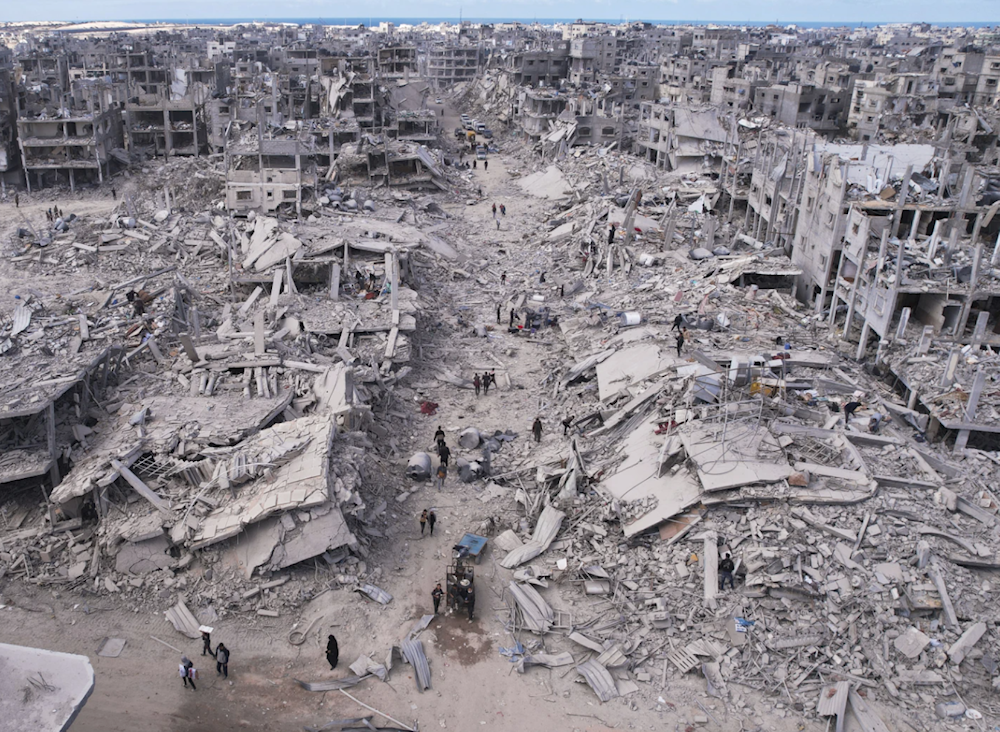From the air, Gaza resembles the 'ruins of an ancient civilization'
Gaza has become one of the most heavily bombed regions on earth, with over 60,000 martyred and countless more buried under rubble.
-

An aerial photograph taken by a drone shows displaced Palestinians returning to Rafah, Jan. 20, 2025 (AP)
In a rare opportunity, The Guardian joined a Jordanian military airdrop mission over Gaza, offering a distant but harrowing glimpse of a land devastated by nearly two years of Israeli bombardment.
From the air, Gaza resembles an apocalyptic ruin, neighbourhoods flattened, roads leading nowhere, and cities reduced to dust and debris. Once vibrant and bustling, Gaza is now a skeletal landscape, not lost to time or nature, but deliberately razed by war.
The flight coincided with "Israel's" decision to resume humanitarian airdrops amid mounting global pressure over severe food and medicine shortages.
Airdrops far from enough
While the Jordanian military dropped three tonnes of aid during the flight, officials admitted the scale is far from enough. Airdrops have delivered only a fraction of what could be brought in by truck and have even resulted in accidental deaths.
Even before the latest escalation, Gaza residents had endured chronic food shortages, compounded by "Israel’s" severe limitations on aid deliveries. Now, with infrastructure decimated and access to food nearly impossible, desperation is universal.
As the aircraft passed over key sites, Nuseirat, Deir al-Balah, Khan Younis, and Rafah, each location carried stories of profound loss: children killed in airstrikes, medics buried in mass graves, hospitals under siege, and civilians trying to survive amid crumbling infrastructure.
One poignant moment came as the plane flew over northern Gaza, where a Guardian reporter on the ground, Malak A Tantesh, continued her work despite being displaced, hungry, and cut off from the outside world.
Rafah now lies in ruins, its devastation deepened since May, when the Israeli- and US-backed Gaza Humanitarian Foundation assumed control of food distribution. In the chaos that ensued, hundreds were killed in desperate attempts to secure aid.
Just a few kilometres east, among crater-scarred hills, sits the site of a deadly Israeli strike on March 23, where a convoy of Palestinian emergency vehicles was hit, killing 15 medics and rescue workers who were later laid to rest in a mass grave.
Gaza has become one of the most heavily bombed regions on earth, The Guardian revealed, with over 60,000 martyred and countless more buried under rubble.

 2 Min Read
2 Min Read










